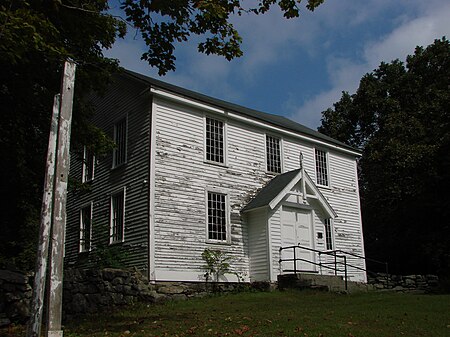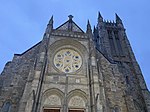Long Society Meetinghouse

The Long Society Meetinghouse is a historic church building at 45 Long Society Road in Preston, Connecticut. It is one of only about a dozen surviving colonial "broad side" meeting houses, and is the last example surviving in Connecticut that has not been altered from that configuration by the addition of a tower or relocation of its entrance or pulpit. The meeting house was built from 1817 to 1819 on the site of an earlier meetinghouse, incorporating some elements of the earlier building. The meeting house was used both as a church and for civic functions, the reason for its plain, not overtly religious appearance. The building was added to the National Register of Historic Places in 1976.
Excerpt from the Wikipedia article Long Society Meetinghouse (License: CC BY-SA 3.0, Authors, Images).Long Society Meetinghouse
Long Society Road,
Geographical coordinates (GPS) Address External links Nearby Places Show on map
Geographical coordinates (GPS)
| Latitude | Longitude |
|---|---|
| N 41.534444444444 ° | E -72.035833333333 ° |
Address
Long Society Meetinghouse
Long Society Road
06380
Connecticut, United States
Open on Google Maps











